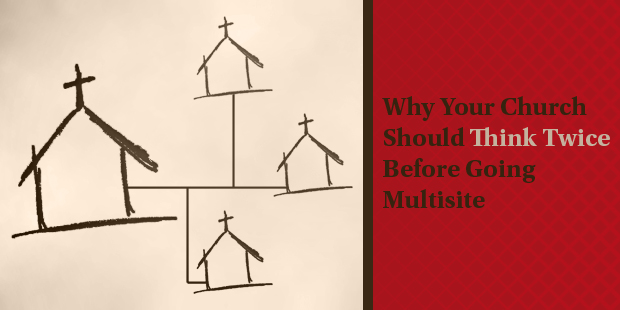
These Seven Things Are Keeping Your Church from Growing
The number one topic in the local church over the last 30 plus years addresses the question, “How do I grow my church?” How can we break through to reach more people for Jesus?
The words change, but the issue remains the same. Years ago, we called them growth barriers, and now the question sounds more like “How do I get unstuck? How can we get unstuck to reach more people?
There was about a decade when we switched from church growth to church health, but it always comes back to growth. The reason for that is that healthy things grow!
There is nothing new under the sun, right? But it’s up to us to remain fresh, relevant and innovate our way forward for the sake of the Kingdom.
With that as context, here are some “fresh” thoughts for today.
Seven Big Barriers:
(with insights for growth)
1) Diminished faith
It’s possible for church leaders to stop believing. I’m not referring to faith in Jesus, but the potential for a pastor, staff member or key leader to lose faith that their church will ever work.
It’s all too common that a leader can lose heart and slide into discouragement. This is the enemy’s strategy! Discouragement is the breeding ground for complacency and maintenance. As a leader, you may remain faithful, but without any fire.
Vision is then lost. Whether the senior pastor, a children’s staff member, or a small group leader, etc., when the leader loses vision, it’s not long before growth slows or stops.
Fight for your faith. Fight to believe again. Who do you know that believes in you? Get some time with them. Borrow their faith in you. Reflect back on when you believed in yourself, and remember that God is with you. It’s His Church, it’s His idea, and what you’re doing matters.
2) Ministry over Strategy
Those of us who lead in the local church are in it to see life change for the people we serve. Therefore, serving people for their spiritual growth is a priority, it’s what we do. But doing ministry for the sake of ministry can be a colossal waste of time if it’s not strategic.
The goal of ministry is not to be busy; it’s to realize a Kingdom productivity that results in changed lives for eternity. For too many years I’ve watched church pastors, staff and volunteer leaders exhaust themselves with little results.
The selection of your ministries must be strategic, not random. Your ministries should be lean and on purpose, not merely at the whim of anyone’s ideas. Alignment as a team is essential.
(And we know strategy without God’s power doesn’t work.)
3) Inward focused
Inward focus is like a subtle bear trap. Of course, there is nothing subtle about a bear trap, except that it’s hidden. It’s not obvious. But when you realize you are caught in one, you then know you’re in big trouble.
No church starts out inward focused. A church turns inward from a good thing gone bad. Community, love, care, discipleship, family, etc., these are all great things and part of the healthy and functioning body of Christ. Until essentially, they become the sole focus of the church.
The result is evangelism drops off, programming becomes all about what the Christians want for themselves, and the worship service begins to cater only to those in the body of Christ.
The scary thing is that all churches drift in that direction. All churches drift inward without the intentional effort to keep an outward focus on those who are far from God. It’s not easy, but it is that simple.
The leaders of the church must agree and align with a ministry that intentionally commits time, resources, effort and energy to reach out.
4) Programs over people
Programs over people can become a reality in a church of any size, but this tends to be a more common barrier in larger and mega-churches. It’s not intentional, in fact, it comes from the natural pressure to bring excellence to programming.
Ministry program excellence is important, but we can’t let it crowd out love and care for individual people.
Program over people shows up in little things that are important things. Such as phone calls not being returned, it becomes difficult to volunteer, and the systems for next steps are complicated.
There is no perfect solution here. It’s impossible for very large churches to give large amounts of time to everyone. The most important thing we can do, however, is to give genuine individualized care to as many as we can. That helps ignite the culture so that this caring attitude has a way of continuing amongst the people.
5) Slipping from relevance
Change is essential. The message of Jesus never changes but our methods, style, and approach must always adapt to the needs of the current culture.
In more extreme cases, when entering an outdated church environment, it’s like walking into a time warp. It causes those who visit to question if the leadership understands how to navigate current culture.
There has never been a greater time or higher need for innovation in the church. From digital opportunities to new approaches in church planting,
Talk with people who don’t attend church and brainstorm new ideas. It might be technology, your worship service, or your kid’s ministry, etc. What needs to be done to remain salt and light in your community?
6) Underdeveloped leaders
Without more and better leaders, your church can’t continue to grow.
If your vision is big and bold, it requires more leaders to help realize that vision. These leaders need to be developed and empowered.
Your leaders need continued training, development and encouragement to keep rising to their potential as well as remain aligned with the vision of the church.
Here are a couple of posts that will help you develop your leaders:
7) Jesus is sidelined in all the busyness
At a theological level, it’s impossible for Jesus to be sidelined in any way.
15 The Son is the image of the invisible God, the firstborn over all creation. 16 For in him all things were created: things in heaven and on earth, visible and invisible, whether thrones or powers or rulers or authorities; all things have been created through him and for him. 17 He is before all things, and in him all things hold together. 18 And he is the head of the body, the church; he is the beginning and the firstborn from among the dead, so that in everything he might have the supremacy.
Colossians 1:15-18
And yet, it’s true that a church can become so busy with people, processes, programs, problems, etc. that Jesus is no longer the recognized head of the body and the established supremacy. When this happens, certainly unintentionally, we lose the Holy Spirit’s power that is needed for true spiritual change and subsequent growth.
Jesus must always be lifted up!

Tags: Church Growth, Dan Reiland, growth barriers






























